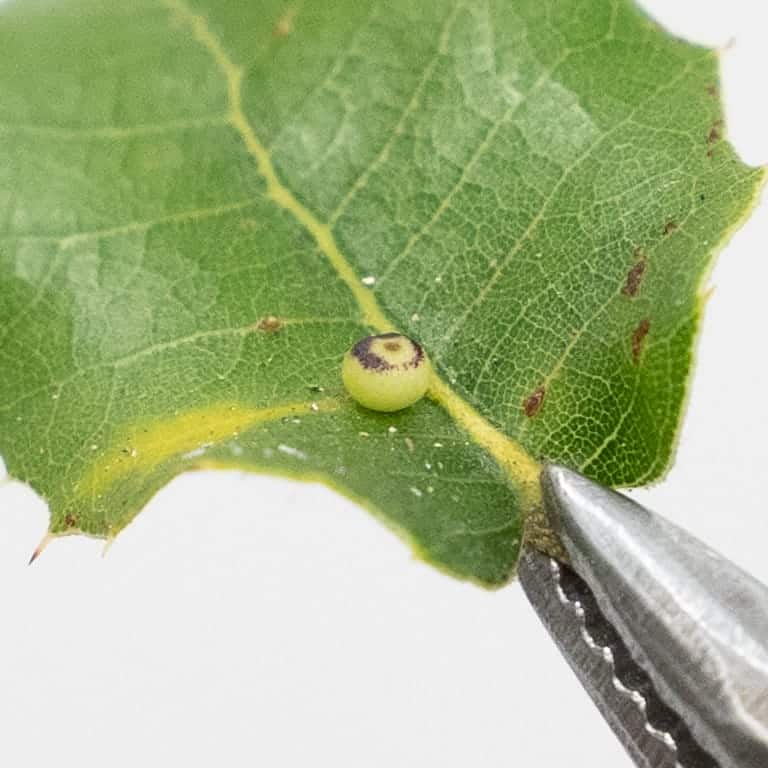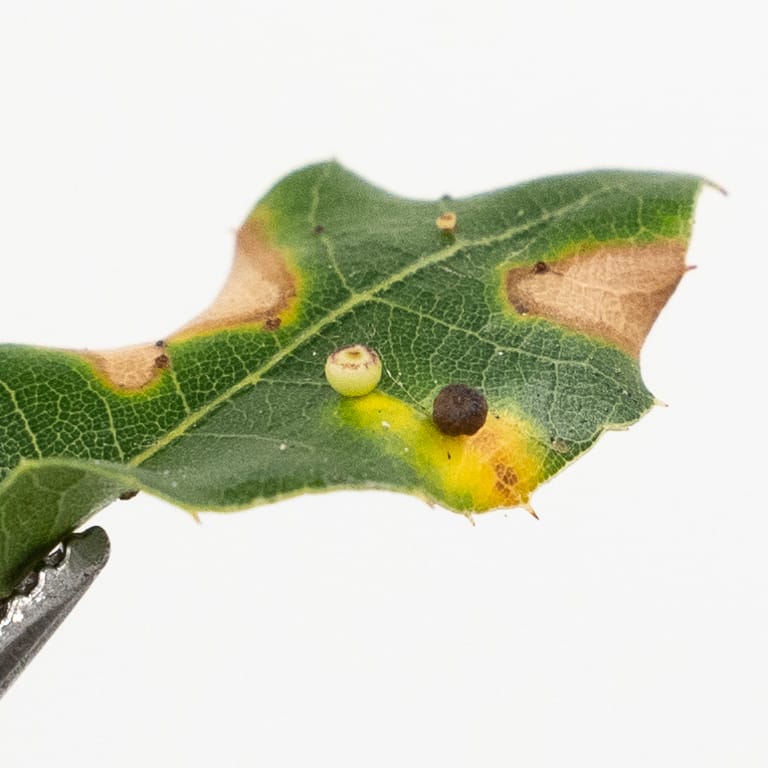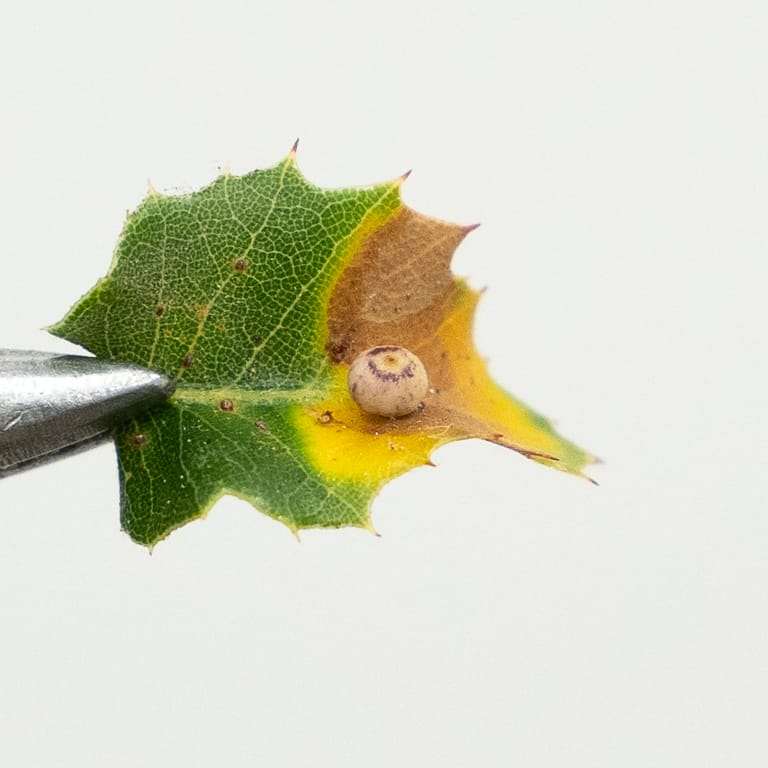I’ve been curious about the small, round bumps that develop on the leaves of California live oaks for a while now. Some years I don’t see any, but most years a few show up toward the end of summer.

Flattened round ball on a Coast live oak leaf
I’d worried they might be something that I don’t want on my trees, but Eric Schrader suggested they were leaf galls and not anything to be concerned about.
The suggestion was right on. The bumps are galls, specifically pumpkin galls. The culprit? Tiny wasps.

New and old galls on an oak leaf
For those who are unfamiliar with gall development, it’s an interesting story.
Tiny wasps in the cynipid family, in this case, Dryocosmus minusculus, deposit eggs inside leaves that produce a substance that fools the plant into producing the gall material. The gall provides protection and nutrition for the developing baby wasp that bores through the gall wall when it’s mature.

Nearly ripe pumpkin gall
As long as there aren’t many galls on an oak bonsai, there’s nothing to do about it beyond removing the galls or the infected leaves with your fingers. If gall development is widespread, it may be worth taking action.
I couldn’t find good suggestions for specific treatments, but the following best practices can help:
- Keep oaks healthy – weak trees are more likely to be infected
- Remove infected leaves
- Remove branches with widespread damage (if the design allows for it)
- Try a systemic pesticide or a contact spray (which will only be effective if applied when the wasps are laying eggs)
If you want to read up on galls, I found the information for this article here, here, and here. If you’re in the western U.S., a good book on the topic is the Field Guide to Plant Galls of California and Other Western States by Ronald A. Russo.
Do note that the pumpkin gall is just one of many galls that can infect our trees. If you have experience treating leaf, twig, or other galls on bonsai, let us know about it in the comments below!
Subscribe to Bonsai Tonight
New Posts Delivered Every Tuesday and Friday
Tino Mikosch says
Why not leave the galls and let the animals live?!
Jonas Dupuich says
Thanks for the note Tino – it’s fine to leave them alone when there are just a few, but if a tree is covered with leaf gall damage, it can stress or kill whole branches or trees.
Bruce Williams says
Thanks, very informative.